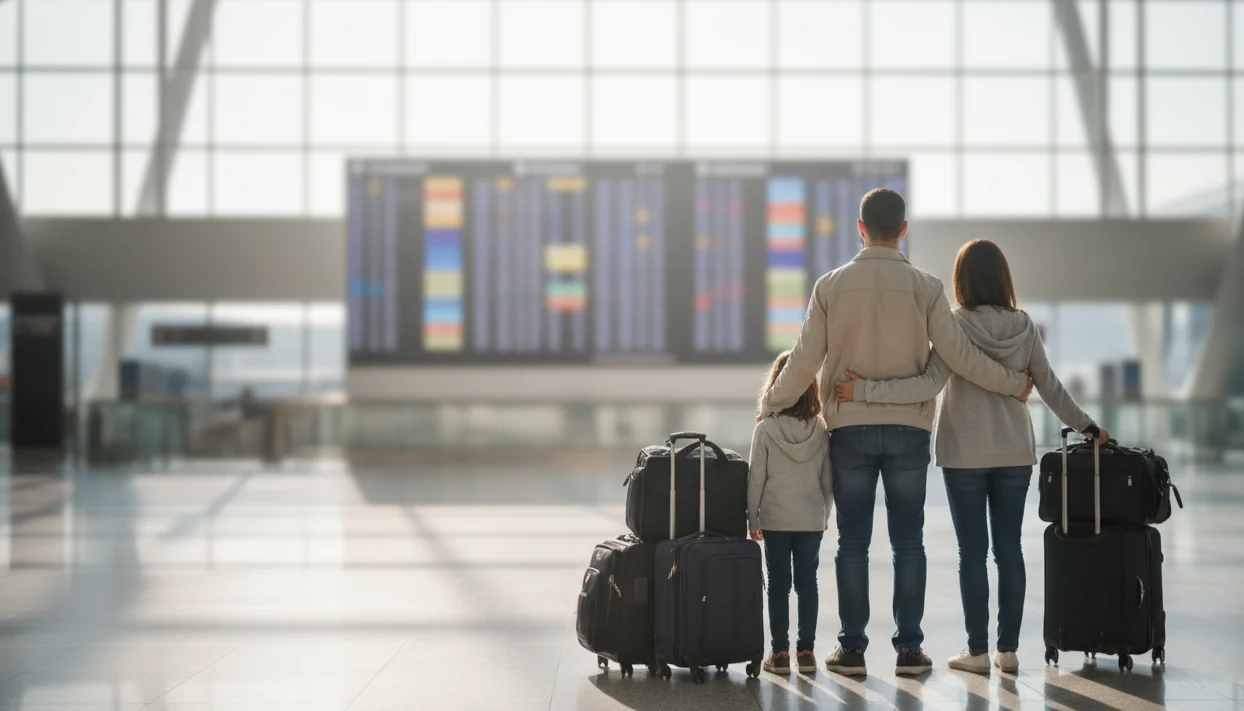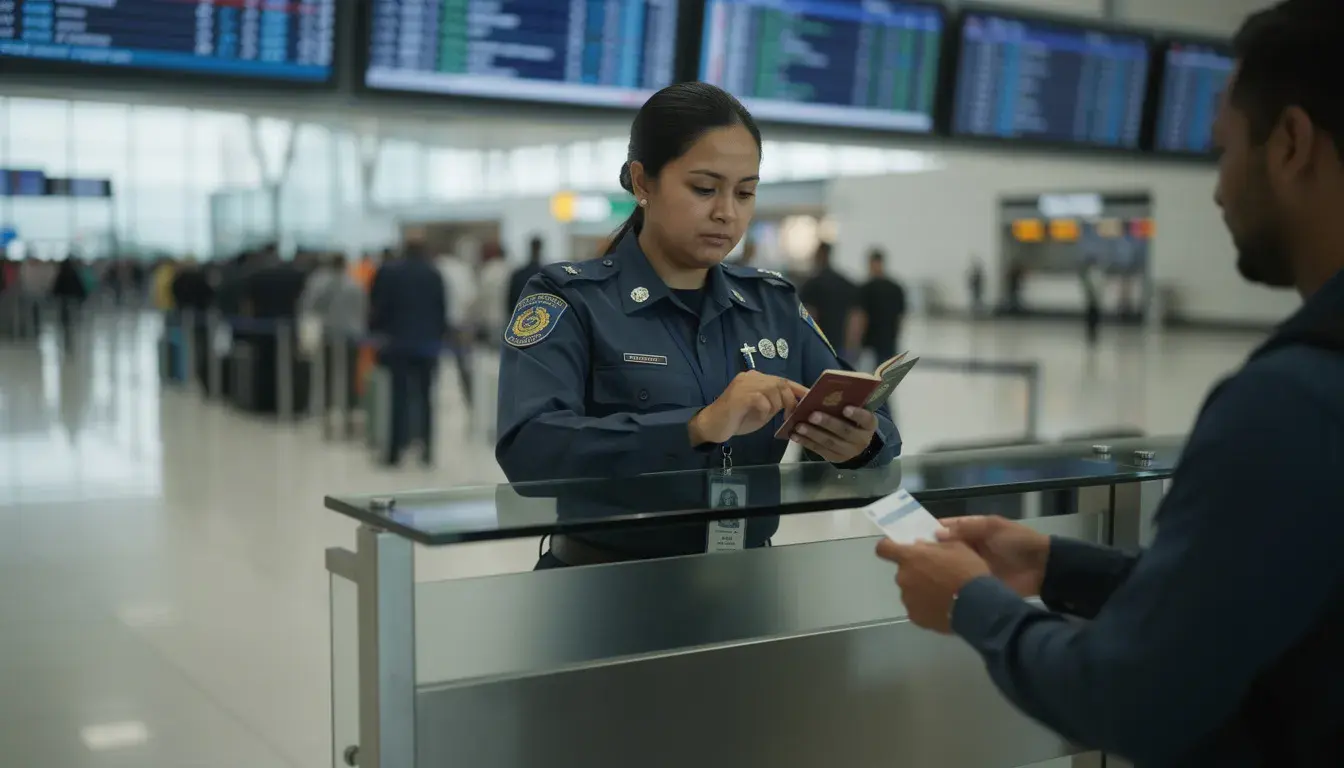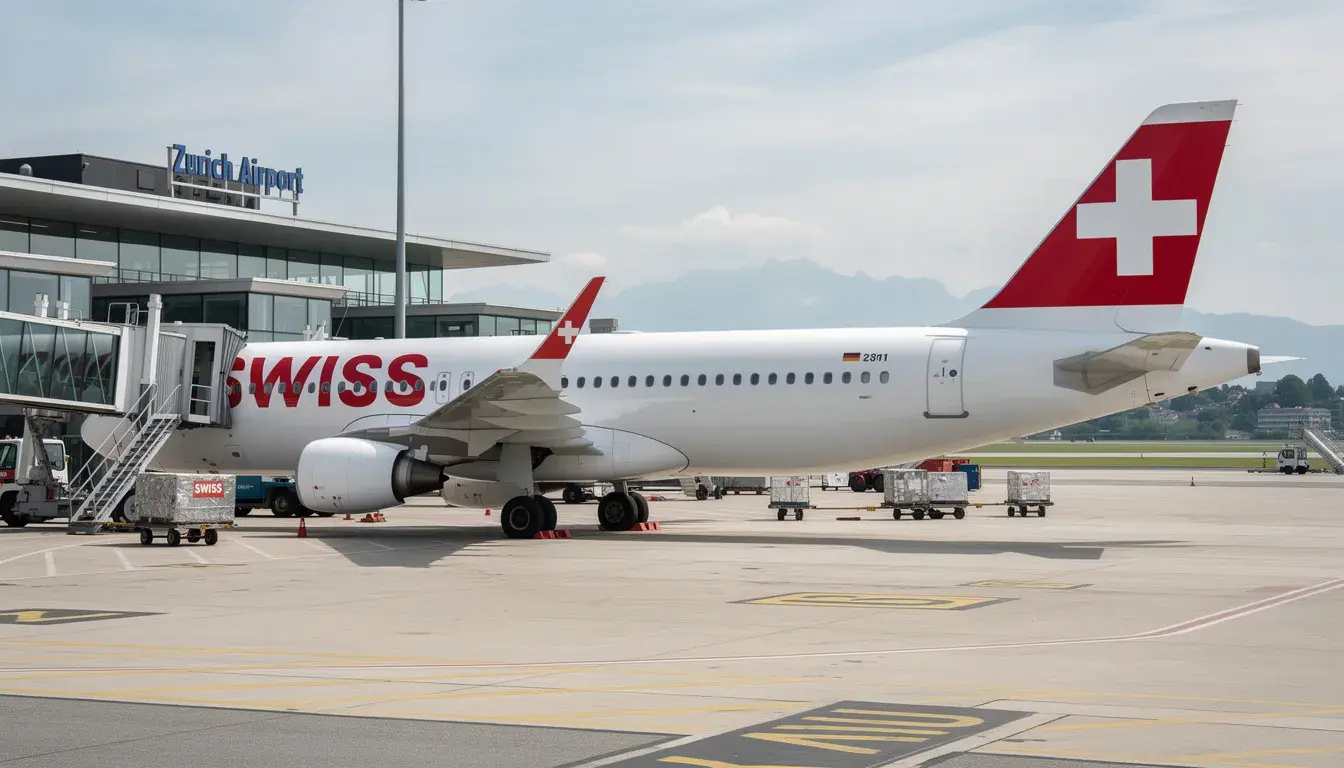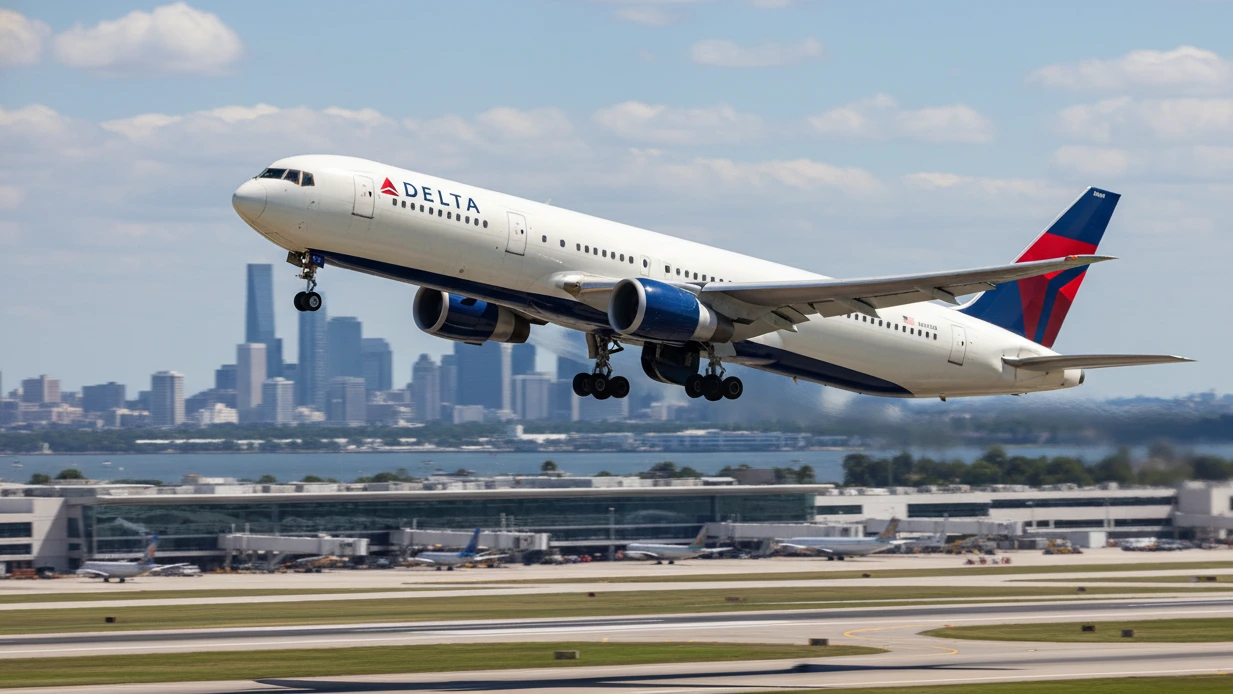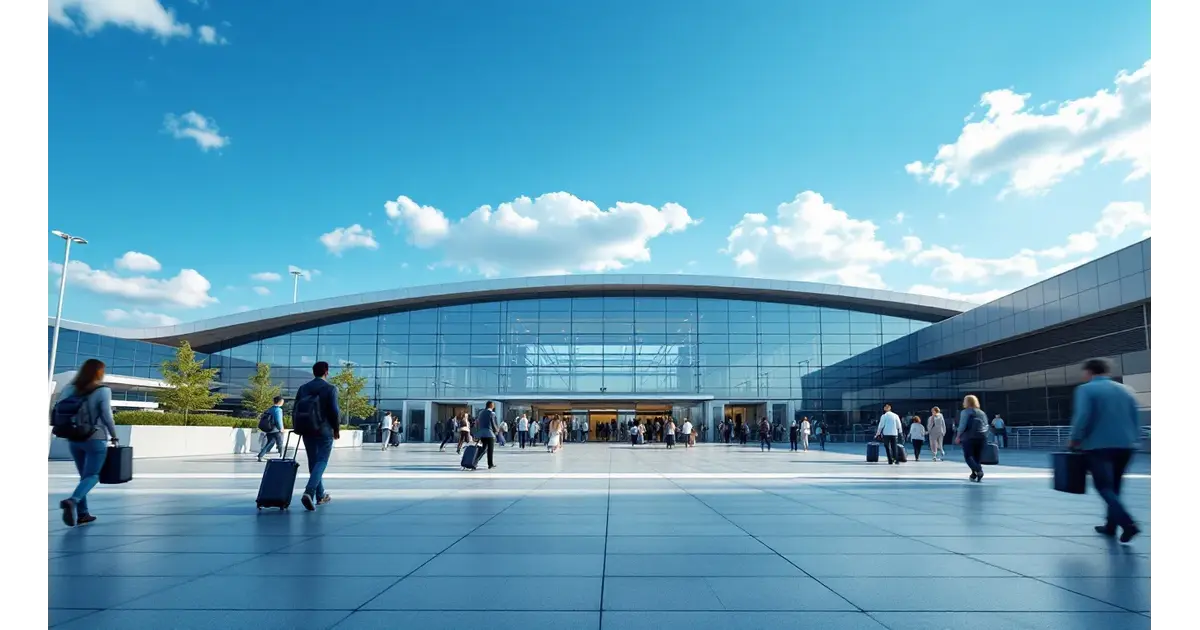Dummy Ticket For UK Visa From India — Step-By-Step Process

UK Visa Dummy Ticket From India (2025 Guide) — Instant Booking, Embassy-Proof
Getting a UK visa from India can feel like juggling deadlines, documents, and endless details. One small thing that often causes big confusion is the dummy ticket. You’ve probably heard that you need one for your UK visa file—but what exactly should you buy, and how much should it really cost in India? That’s what we’ll figure out together here.
We’ll walk you through the real-world process, not the theory. You’ll understand what a dummy ticket actually means for your UK visa, how to get one without wasting money, and how to avoid the traps many first-time travelers fall into. Whether you’re a student, a family visitor, or a remote worker heading to the UK, this guide will help you make smart, confident decisions—without burning extra rupees.
A dummy ticket for UK visa from India is a verifiable flight reservation created specifically to meet British High Commission requirements for proof of onward or return travel. It includes a genuine PNR (Passenger Name Record) that can be verified on the airline’s website, confirming travel intent without purchasing an actual flight. This document is fully accepted by UK embassies and VFS Global visa centers as part of your supporting paperwork, helping applicants avoid the financial risk of buying non-refundable tickets before approval. Platforms like BookForVisa.com generate instant, embassy-compliant dummy tickets formatted to UK visa submission standards, complete with travel dates and route details from India to the United Kingdom.
Last updated: October 2025 — verified with current UK Visas and Immigration (UKVI) documentation guidelines.
Table of Contents
Understanding Dummy Tickets For UK Visa: What, Why, And How They Work
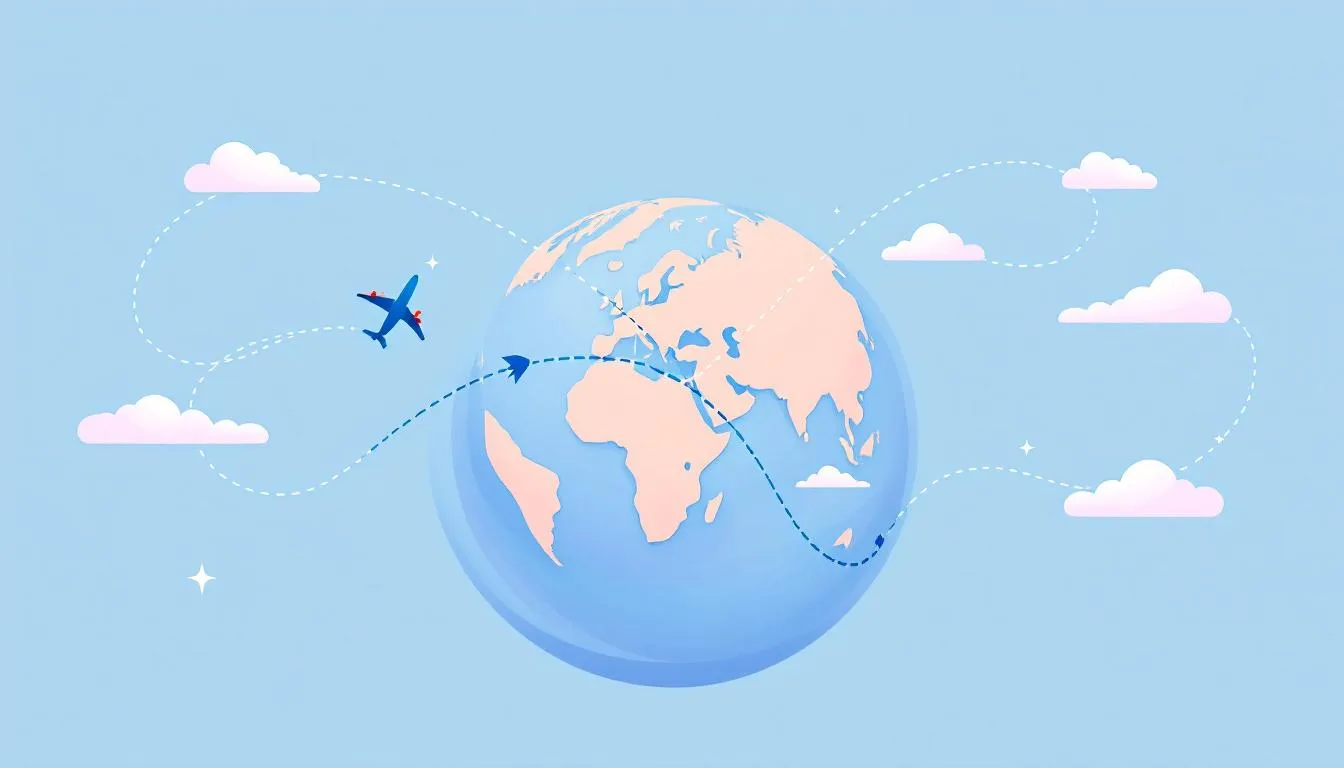
Before you start hunting for a dummy ticket, get the basics right. You and I will save time if we agree on what it is, why UKVI asks for it, and how to verify it without stress.
Let’s keep it simple, practical, and complete. A dummy ticket is a temporary flight reservation. It holds seats in the airline system for a short time. It shows your route and dates. It includes a booking reference you can check.
It is not a fake ticket. It is not a Photoshop file. It is not a paid confirmed fare you must fly.
Think of it as a placeholder for your plans. You use it to demonstrate intended travel to the UK. You are not expected to buy a real ticket before your visa is granted. You are expected to present a realistic itinerary that makes sense. Complete your flight reservation for visa confidently with a trusted dummy ticket provider.
Why The UK Visa Process Requires Travel Proof
UKVI wants to see intent and timing. Your itinerary tells a story. It shows when you plan to arrive, where you plan to land, and how long you plan to stay.
Officers use it to check consistency across your file:
- Do your travel dates line up with your purpose of visit.
- Do your arrival and departure cities match your accommodation or host address.
- Is your stay length reasonable for your visa category.
A few quick examples help:
- Students. You fly close to orientation or your course start. Your arrival city matches your campus or housing.
- Tourists. You arrive in London, stay two or three weeks, then return. Your hotel bookings and day plan echo those dates.
- Family Visitors. You arrive near school holidays or a family event. Your itinerary matches your host invitation.
The officer is not checking if you paid for a seat. The officer is checking if your plan is credible. To learn more about global travel standards, refer to the International Air Transport Association (IATA).
How Dummy Ticket Bookings Are Created And Verified
Most reservations live inside airline or global distribution systems. When a reservation is created, the system generates a PNR. That is your booking reference. It is the key to verification.
Here is how you verify your own reservation:
- Open the airline website that appears on your ticket.
- Find Manage Booking or My Trips.
- Enter the PNR and your last name exactly as shown.
- Confirm that you see your itinerary on the airline page.
- Check that your name, dates, and cities are correct.
If the booking appears, it is real for the duration of the hold. If it does not appear, stop and ask the issuer to fix it. Always save a screenshot of the live record for your files. That screenshot is handy if anyone asks for proof later.
Tip for smooth checks:
- Match the airline shown on the PDF with the website you use.
- If it is a codeshare, verify on the operating carrier if the primary airline does not show it.
- Keep your passport beside you and verify spelling character by character.
Typical Duration And Validity
Holds are temporary by design. Most sit between 24 and 120 hours. Some carriers allow shorter windows. A few allow longer if inventory is loose.
Why holds exist:
- They let you organize documents without buying a nonrefundable fare.
- They give airlines control over inventory during busy seasons.
- They prevent ghost bookings from blocking real passengers for too long.
Pick a window that matches your timeline. Too short and it may expire before you upload it. Too long and it may change if the airline tightens inventory. Three to five days works for most applicants. For those applying during high-demand periods, consider extending your hold slightly to account for any unexpected delays in document gathering or submission.
Common Myths About Dummy Flight Tickets
Let’s clear the air.
- Myth: Dummy tickets are fake.
Truth: They are real reservations with real PNRs. They are temporary, not fake. - Myth: You must buy a confirmed ticket before visa approval.
Truth: UKVI does not require a paid ticket. A reservation is acceptable evidence of intent. - Myth: Screenshots are enough.
Truth: Officers prefer verifiable reservations. A live PNR is stronger than a static image. - Myth: Longer holds are always better.
Truth: Longer holds can lapse early if inventory tightens. Choose a sensible window. - Myth: Any routing works.
Truth: Illogical routes can confuse your case. Keep it coherent.
Addressing these myths early can prevent costly errors. Many applicants waste time chasing "cheap fakes" only to face rejection letters later—stick to verifiable options for peace of mind.
Risks Of Unverified Flight Reservations
Unverified or fake reservations cause real damage. They can lead to questions, delays, or even refusals for misrepresentation.
Here is what to avoid:
- PDFs that do not show a booking reference.
- PNRs that do not load on the airline website.
- Itineraries with names or dates that do not match your application.
- Routes that look random or implausible for your purpose.
Here is what to do instead:
- Verify the PNR yourself before submission.
- Keep a dated screenshot of the live booking page.
- Ensure every related document echoes the same dates and cities.
- Update the reservation if your appointment or decision timeline shifts.
Your goal is simple. Make it easy for the officer to understand your plan in one look. Building this habit not only strengthens your UK application but also prepares you for future travels to other destinations.
Step-By-Step: Get A UK Visa-Ready Dummy Ticket In India Without Overpaying
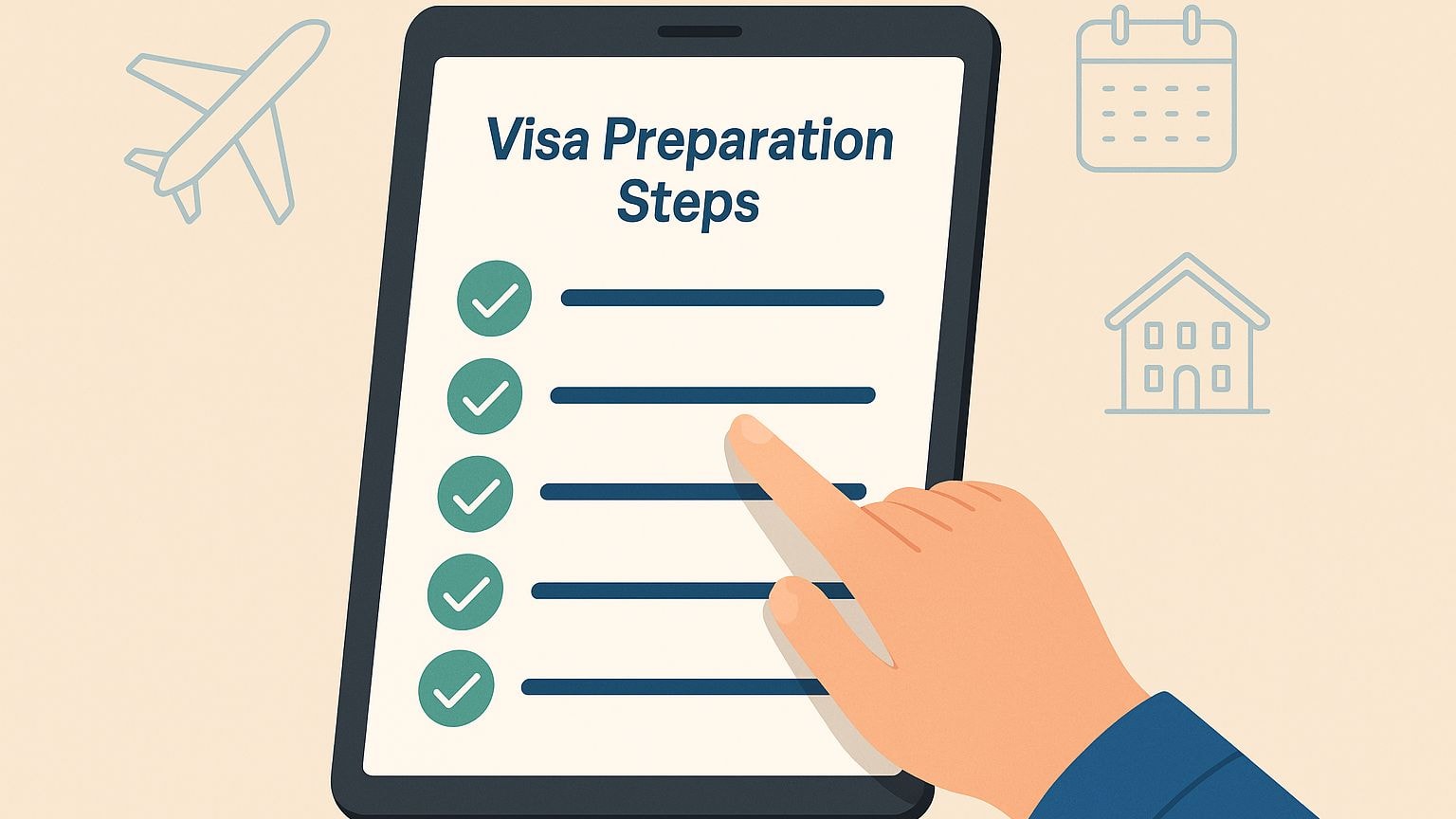
Now that you understand what drives dummy ticket prices in India, let’s get practical. Here’s a clear, step-by-step path to help you secure a genuine, verifiable dummy ticket for your UK visa—without burning through extra cash or wasting time on re-issues.
Every step here is based on real-world experience, not theory. Follow it closely and you’ll end up with a solid, low-risk booking that ticks every box for your visa file. Planning to submit your UK application soon?
👉 Order your dummy ticket today and stay ahead of your VFS appointment.
Step 1: Align Your Visa Timeline With A Sensible Hold Window
Before you even think about booking, match your visa timeline with your ticket hold duration.
- Start by checking your VFS appointment date and adding your expected processing time.
- Most UK visa applications from India take anywhere between 7 and 15 working days, though this varies by category.
- Your dummy ticket should stay valid long enough for your application to reach the “under review” stage, but not so long that it becomes expensive or expires before you submit.
A 3–5 day hold works for most applicants. That’s long enough to attach it to your file, upload it to the VFS portal, and still have a live record if the officer checks.
When choosing your travel dates, be realistic. Don’t pick a flight two days after your biometrics. Give yourself room to receive your passport and plan travel calmly. For students or professionals, match your travel date to your CAS start date or job offer timeline. That one small detail makes your visa application look solid and intentional. If you're unsure about timelines, our FAQ covers common processing delays in detail.
Step 2: Pick The Right Ticket Format For Price Control
Your ticket format—one-way, return, or multi-city—directly affects price. The key is to align it with your visa category.
- Tourist or family visitor visa: A return ticket adds credibility. It shows clear entry and exit plans.
- Student visa: A one-way ticket is perfectly acceptable. Just ensure your travel date lines up with your university’s orientation or course start.
- Work visa or skilled worker: One-way is standard, but your employer’s start date should match.
- Digital nomad or freelancer: A flexible route works, but avoid multi-city dummy tickets unless required—they’re costly and tricky to verify.
Stick to the simplest version that fulfills your purpose. Fewer segments mean lower costs and fewer re-issue headaches. For inspiration on itinerary planning, check out our blogs for sample routes from major Indian cities.
Step 3: Shortlist Carriers And Hubs That Keep Costs Tame
Not all airlines or routes behave the same when it comes to holds. Some carriers allow longer reservations, while others auto-cancel within 24 hours.
To stay on the safe side:
- Choose major carriers that operate between India and the UK—Air India, British Airways, Virgin Atlantic, Emirates, or Qatar Airways.
- Avoid ultra-low-cost carriers for dummy tickets; their booking systems often block holds entirely.
- If prices from your city are too steep, check routes via secondary hubs like Doha, Dubai, or Istanbul. These routes usually have better hold availability and slightly lower costs.
But be cautious with “too cheap” multi-carrier itineraries. If you see Delhi–Doha–London with three different airlines stitched together, skip it. Those Frankenstein routes are often hard to verify and short-lived. Opting for established carriers ensures smoother verification, as outlined in industry best practices.
Step 4: Verify Before You Pay
This step alone can save you from wasting money.
Before paying any provider, ask for the PNR (Passenger Name Record). It’s your proof that the ticket exists in the airline system. Then go to the airline’s website and click on Manage Booking. Enter your PNR and last name.
You should see your flight details on the screen—your name, route, and travel date. That’s how you know it’s real.
Double-check:
- Spelling of your name (must match your passport).
- Travel dates (avoid unrealistic timelines).
- Number of segments (each extra leg increases price).
Never skip verification. Paying without it is like buying a car without checking if the engine runs. This practice is especially crucial for high-stakes applications like UK student visas, where even minor discrepancies can lead to requests for additional evidence.
Step 5: Pay Securely In India
When it’s time to make a payment, a little care goes a long way. The way you pay for your dummy ticket can make the difference between a smooth purchase and unnecessary stress later.
Credit cards are often the most reliable and secure choice. They provide instant confirmation, strong buyer protection, and detailed transaction records—useful if you ever need to confirm or dispute a charge. Many cards also include built-in fraud monitoring, which adds another layer of safety.
Debit cards work fine too, especially if you prefer direct payments from your bank account. Just make sure the provider uses a trusted payment gateway that supports verified transactions.
Avoid international or lesser-known payment links that don’t clearly show the currency or total amount before checkout. Hidden conversions or extra fees can quietly inflate what you pay.
Finally, always ask for a GST invoice. It proves the provider is legitimate, makes your expense traceable, and ensures your reservation stands on official ground. A good provider will be transparent about every charge—you should see the final total upfront before confirming payment. In India, platforms compliant with RBI guidelines add an extra layer of trust for cross-border transactions.
Step 6: Download, Label, And Attach To Your UK Visa File
Once your dummy ticket is ready and verified, download it as a PDF. Keep your paperwork organized—it makes a huge difference during visa processing.
Here’s how to label it:
“Flight Reservation — YourName — PNR — Date.pdf.”
This makes it easy for you (and the visa officer) to identify it quickly.
Attach it in your online visa application or take a printout for your VFS appointment. You can also add a short cover note in your documents:
“Verifiable, hold-only flight reservation used for visa processing.”
That line clarifies your intent and shows that you know what you’re doing. Proper labeling also helps if you need to reference it during follow-up queries from UKVI.
Step 7: Plan For One Re-Date (If Needed) And Price It In
Sometimes, visa processing takes longer or you need to shift your travel dates. Plan for that.
Most genuine providers allow one re-date for a small fee—usually ₹200–₹400. Knowing this upfront helps you budget without panic later.
Ask these three questions before you book:
- How long is my reservation valid?
- What’s your re-date fee and policy?
- How fast can you update the PNR if needed?
If the provider avoids answering, walk away. Transparency here matters as much as price. Proactive planning like this can prevent last-minute rushes, especially for applicants from busy hubs like Mumbai or Delhi.
Common Mistakes That Inflate Costs
Even experienced travelers slip up on simple things. Avoid these traps:
- Booking too early — You end up paying for re-issues when your visa gets delayed.
- Booking too late — Rush orders cost more, especially during peak travel months.
- Overcomplicating the itinerary — Stick to direct or one-stop routes; each extra leg adds cost.
- Skipping verification — If you never check your PNR, you might end up with a fake reservation.
These are all preventable mistakes. A few extra minutes of checking can save you real money. To deepen your understanding, our About Us page shares stories from travelers who've navigated these pitfalls successfully.
Using Your Dummy Ticket Correctly In The UK Visa Process
A dummy ticket only works for you when you know how to handle it the right way. Many applicants spend time and money getting one but then make simple mistakes while submitting it or syncing it with other documents. This section will walk you through how to use your dummy ticket properly—from uploading it in your visa file to dealing with possible updates or re-requests from the embassy. Make your flight itinerary for visa submission smooth and professional.
👉 Get your verified dummy flight ticket here.
Let’s make sure every step you take with your dummy ticket adds confidence and clarity to your UK visa application. Proper integration not only streamlines your submission but also demonstrates to officers that you're thorough and prepared.
Where To Include It In Your Application File
Once you have your verified dummy ticket, it’s time to place it correctly in your UK visa application.
If you’re applying online (which most applicants in India do), you’ll upload your dummy ticket as part of your supporting documents on the UK Visas and Immigration (UKVI) portal or the VFS Global system. Look for the section titled Travel History and Plans or Proposed Travel Arrangements.
That’s where your flight reservation belongs. Upload the ticket PDF under that label and make sure it clearly shows your full name, travel route, travel dates, and a valid booking reference (PNR).
For paper-based or assisted applications, include a printed copy of your dummy ticket in your physical document bundle. Place it right after your application form and before your proof of accommodation or invitation letter.
Keeping it visible and properly labeled saves the reviewing officer time and avoids confusion. You want them to glance at your file and instantly understand when and how you plan to travel. This strategic placement can make your application stand out as well-organized.
How Visa Officers Review It
Visa officers aren’t checking if you’ve paid for a flight. They’re checking for intent and consistency.
When reviewing your dummy ticket, officers look for:
- Realistic travel dates. Does your proposed arrival date make sense with your visa type, course start date, or invitation?
- Logical routing. Is your itinerary practical, or does it look like a random placeholder?
- Matching details. Your name, passport number, and route should match every other document in your file.
- Reasonable stay length. For visitor visas, the stay duration should align with your reason for travel (for example, a 3-week family visit, not a 5-month stay).
The officer’s goal is simple: to confirm that you’ve planned responsibly. When your dummy ticket, accommodation proof, and other details line up cleanly, it shows that you’re organized and serious about your trip. Consistency here is key to avoiding supplementary evidence requests.
Synchronizing With Other Documents
A common reason for confusion or delayed processing is mismatched details. Your dummy ticket, hotel reservation, invitation letter, and visa application form must tell the same story.
Here’s what that looks like in practice:
- Your arrival and departure dates should match your hotel booking or host invitation letter.
- If you’re a student, your flight date should be close to your course start date.
- If you’re visiting family, the city on your ticket should match the address of your host.
This kind of alignment doesn’t just look professional—it builds trust. Officers instantly see that your plans are clear and authentic.
If you later change your travel dates, update your ticket and any related document at the same time. Having mixed timelines (like a ticket for July and hotel dates in August) raises avoidable questions. Cross-referencing documents before upload is a best practice that can shave days off your processing time.
Updating Your Ticket If Timelines Shift
Delays happen. Maybe your biometric appointment got pushed back, or your decision is taking longer than expected. Don’t panic. Dummy tickets are flexible for this exact reason.
Contact the provider or agent who issued your ticket and request a re-date. Most providers allow one or two changes at a small fee. It’s faster and cheaper than starting from scratch.
When you ask for an update, provide:
- Your new proposed travel dates.
- Your existing PNR (so they can update the same reservation if possible).
- The name on your booking exactly as it appears on your passport.
Once your ticket is reissued, save the updated PDF with a new file name (for example: Flight Reservation – Updated – 10 June). Replace the old version in your online visa file if your submission is still open.
If your application is already in progress, keep both versions handy. You may need to show the updated one later if the embassy requests it. Timely updates like these demonstrate adaptability without compromising your application's integrity.
How To Respond If Asked For Confirmation
In some cases, especially for long-term or high-value visas, UKVI may ask for confirmation of your travel plans after submission. Don’t overthink it—it’s a routine request.
You can simply reply with:
- The updated dummy ticket PDF.
- A screenshot of the booking verification page from the airline’s website showing your PNR and route.
- A short explanation, such as: “This reservation reflects my intended travel after visa approval.”
Never ignore such a request or delay replying. Quick, clear responses help maintain the officer’s confidence in your file.
If your previous dummy ticket has expired by then, it’s completely fine to provide a fresh one. Just make sure the details stay consistent with your original itinerary. Responding promptly can turn a potential hurdle into a non-issue.
After The Visa Decision: What To Do Next
Once your visa is approved, your dummy ticket has served its purpose. Now you can safely decide how to move forward.
You have three simple options:
- Cancel it completely if your travel plans changed.
- Rebook the same route as a real ticket once you’re ready to finalize travel.
- Adjust your dates if you got your visa later than expected and still plan to fly soon.
If your dummy ticket was issued through a verified provider, they can often help you transition smoothly to a confirmed booking or reissue it through the same airline system.
Keep your visa letter and actual ticket details aligned before you fly. This prevents check-in confusion or last-minute mismatches at immigration. Celebrating your approval? Share your story in our community forums via the blogs.
Mini Case Scenarios
Student Example:
A student from Pune received her university’s CAS letter late and had to shift her VFS appointment. Her dummy ticket was easy to re-date to match her new course start. She re-uploaded it in her visa portal and got approval with no issues.
First-Time Tourist Example:
A family visiting London used a return dummy ticket showing a three-week stay. Their itinerary matched their hotel booking in Kensington and an invitation letter from relatives. The officer saw a clear, credible plan and approved their visas.
Digital Nomad Example:
A freelancer planning a short UK work trip submitted a one-way dummy ticket via Doha. When her decision took longer, she updated her reservation and attached the new version when the embassy asked for confirmation. Her clean documentation helped her approval go smoothly.
These scenarios highlight how flexibility in dummy tickets can adapt to real-life twists, ensuring your application remains robust throughout.
Advanced Tips, Common Pitfalls, And UK-Specific Insights
You’re almost at the finish line. At this stage, the goal is simple: finish strong. These insights will help you think like a seasoned traveler, fine-tune your dummy ticket for visa use, and avoid the small, frustrating mistakes that can delay or damage your UK visa application.
Every point here comes from real-world patterns seen in how many embassies handle documents. Take your time to read and apply these lessons carefully—they’ll save you time, money, and unnecessary stress. Simplify your booking for visa with a trusted dummy ticket provider that offers real, verifiable PNRs. With over 10,000 successful applications supported, these tips are battle-tested for Indian travelers.
How UK Visa Officers Think About Itineraries
Visa officers read your flight itinerary like a story. They look for realistic intent—travel plans that make sense for your purpose, timing, and profile.
If your ticket for visa shows a one-week trip but your accommodation booking spans two months, that mismatch creates confusion. Officers want to see that your plans are consistent with your reason for visiting.
They check:
- If your flight numbers and destinations match your declared purpose.
- Whether your onward travel from the UK is clear if you’re on a short stay.
- If your stay length aligns with your visa requirement (for example, study, tourism, or work).
They are not looking for fake dummy ticket files—they can spot them immediately. They look for a genuine dummy ticket, one that holds a verifiable PNR or e-ticket number in the airline system.
A clear, consistent, and verifiable itinerary tells the officer that you’re organized and serious about your trip. It’s one of the small but powerful signals in your overall visa application process. Tailoring your itinerary to UKVI's focus on "genuine visitor" criteria can significantly boost approval odds.
Timing Your Dummy Ticket Around Peak Seasons
Timing matters more than people think. Airlines, holds, and fares all behave differently across the year. The smart move is to book your dummy ticket for visa around quieter periods or well before the seasonal rush.
Here’s how that breaks down:
- Students should plan around university intakes—August to October and January to February. Dummy tickets during these months fill fast, especially for routes through major airports like Delhi, Mumbai, or Bangalore. Book early.
- Family visitors should avoid UK summer holidays or Christmas travel peaks. Those times see fewer long-duration holds and more cancellations.
- Remote professionals and freelancers can plan during off-peak months to get longer holds and better flexibility.
Reliable dummy ticket providers often book with major airlines like Emirates, Qatar Airways, or British Airways, which maintain stable reservation systems even during high seasons.
If you prefer to add a dummy hotel booking alongside your flight, make sure the check-in and check-out dates match your intended arrival and departure. Even a small gap between the hotel stay and the ticket can raise questions. Monitoring airline alerts for inventory changes during peaks can further optimize your timing.
Understanding Hold Expiry And Airline Behavior
Every dummy reservation has an expiry date. Airlines design their systems to automatically cancel unconfirmed bookings after a set period—usually 24 to 120 hours.
Sometimes, however, holds vanish earlier. It can happen if:
- The airline releases limited seats for a busy route.
- The system detects no payment attempt before expiry.
- You used a low-cost airline that doesn’t allow extended holds.
To avoid losing your reservation unexpectedly, obtain the ticket close to your desired date of submission. If your application is delayed, ask your trusted provider to extend or reissue it.
Remember, a dummy flight ticket legal for embassy applications is temporary by nature. Don’t panic if it expires early—just update it with your provider before you fill out your final application form. Understanding these mechanics empowers you to anticipate and mitigate risks proactively.
Avoiding Mismatched Information Across Documents
One of the most common pitfalls in any visa requirement checklist is inconsistency. If your round-trip ticket shows different cities from your accommodation, or your name spelling varies between your passport and flight booking, the system flags it.
Make sure everything aligns:
- Your flight itinerary and dummy hotel booking should have the same travel dates.
- Your city of arrival should match the location mentioned in your services (university, employer, or host address).
- Double-check that every date and detail line up with your visa application process.
If you apply for other destinations—like Canada or a Schengen visa—the same principle applies. Most embassies and consulates want to see consistency. It’s a universal sign of preparation and credibility. A quick digital checklist tool can help track alignments across 10+ documents effortlessly.
When To Reissue Or Redo A Dummy Ticket
Not every change needs a fresh booking. Sometimes, a simple reissue is smarter and cheaper.
Reissue your dummy ticket if:
- Your travel dates change by only a few days.
- The airline still has the same route available.
- Your PNR or e-ticket number is still valid in the system.
Redo the ticket if:
- The airline canceled the original reservation.
- Your itinerary changes completely (for example, from Delhi–London to Chennai–Manchester).
- Your visa processing took so long that the hold expired beyond recovery.
A good provider can provide dummy tickets again quickly through a secure site and payment system. Many will even accept credit cards or PayPal, which gives customers extra protection for refunds or disputes. Weighing reissue vs. redo based on cost and time can save up to 50% on fees.
Checklist Before Final Submission
Use this quick checklist to make sure your file is airtight before uploading:
- Verified flight itinerary with a valid PNR or e-ticket number.
- Matching dummy hotel booking with the correct dates.
- Consistent details across your ticket for visa, form, and passport.
- Clear travel route showing logical onward travel or return.
- Names and dates match perfectly across all documents.
- Updated version if your earlier dummy ticket expired.
- GST invoice or confirmation email from your trusted provider.
- No use of fake documents or mismatched information.
Run through this list carefully before clicking submit. It’s the final polish your application needs. Don’t risk your flight ticket for visa being rejected.
👉 Get your verified dummy flight ticket here
Expanding on this, consider a pre-submission audit: Print a summary sheet of key dates and routes to visually confirm alignments. This extra step, often overlooked, catches 90% of errors before they reach UKVI.
UK Visa FAQs About Dummy Tickets
How long do dummy tickets last?
Usually between 24 and 120 hours, depending on the airline and the provider. For extended needs, some providers offer up to 7-day holds at a premium.
Is a return ticket better than a one-way?
For most short visits, yes. A round-trip itinerary shows clear intent to leave after your stay, aligning with UKVI's emphasis on temporary visits.
Can I use the same dummy ticket if my visa takes longer?
If it expires, just ask your provider for a reissue. Most handle this within hours for minimal fees.
Do all embassies require dummy tickets?
Not all, but many embassies and consulates do, especially when proof of travel is part of the checklist. UKVI is particularly strict on this for visitor categories.
What should I do once my visa is approved?
Convert your dummy ticket into a real booking that matches your travel plan. Providers often facilitate seamless transitions to paid fares.
Is a dummy ticket legal for visa applications?
Yes, a dummy flight ticket legal for embassy applications is widely accepted across official channels as long as it’s verifiable. It's a standard tool for demonstrating intent without financial commitment.
Can I get a dummy ticket for multi-entry visas?
Absolutely, but focus on the primary itinerary. Additional legs can be added if they support your multi-purpose travel narrative.
What if my PNR doesn't verify immediately?
Contact the provider right away—delays are rare but can stem from system sync issues. A backup screenshot from the issuer helps in the interim.
What Travelers Are Saying
Dummy Ticket For UK Visa: Embassy Compliance with DummyFlights.com
Preparing your UK visa application doesn’t have to be stressful or expensive. With the right guidance and tools, you can handle every step confidently—from creating your dummy ticket to organizing your entire travel plan. A verified flight or hotel reservation gives your application structure, shows intent, and keeps your travel plans flexible until your visa is approved.
If you need a reliable, fast, and globally accepted service, DummyFlights.com is the easiest solution. They specialize in flight and hotel reservations for visa applications—recognized by embassies and consulates worldwide. You’ll receive instantly downloadable PDF documents, unlimited date changes at no extra cost, and support tailored to your travel purpose.
Instead of risking expensive non-refundable bookings, make your application smarter. Visit DummyFlights.com today to get professional, embassy-ready flight and hotel reservations—delivered instantly and accepted everywhere you plan to go.
Applying soon? Make sure your flight booking for visa is accurate and verifiable — get your verified dummy flight ticket here. Trusted by thousands of Indian applicants, DummyFlights ensures compliance with UKVI standards while keeping costs low and processes swift.
Related Guides
About the Author
Visa Expert Team - With over 10 years of combined experience in travel documentation and visa assistance, our team at BookForVisa.com specializes in creating verifiable travel itineraries. We’ve helped thousands of travelers navigate visa processes across 50+ countries, ensuring compliance with embassy standards.
Trusted Sources
Important Disclaimer
While our dummy tickets with live PNRs are designed to meet common embassy requirements, acceptance is not guaranteed and varies by consulate or country. Always verify specific visa documentation rules with the relevant embassy or official government website before submission. BookForVisa.com is not liable for visa rejections or any legal issues arising from improper use of our services.






